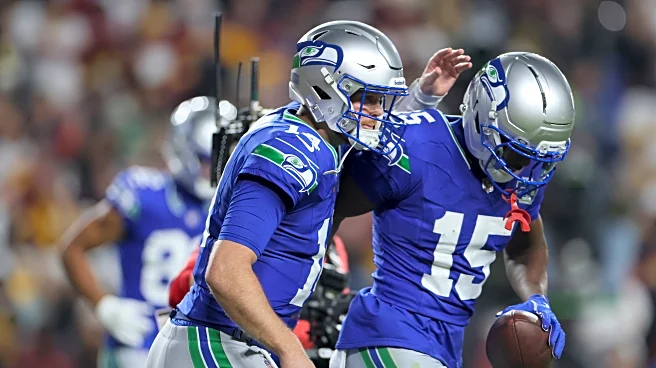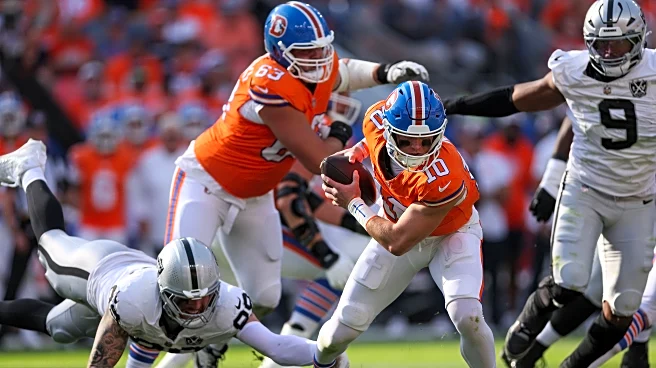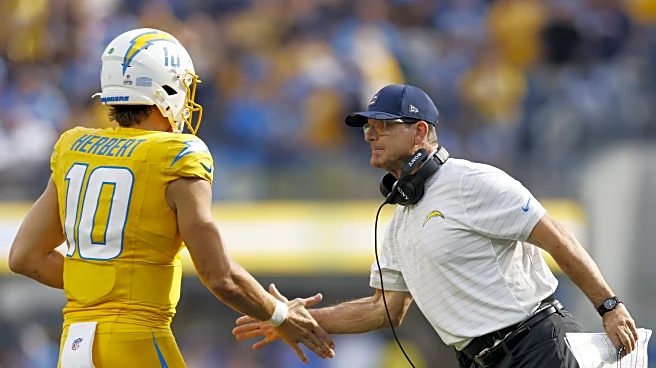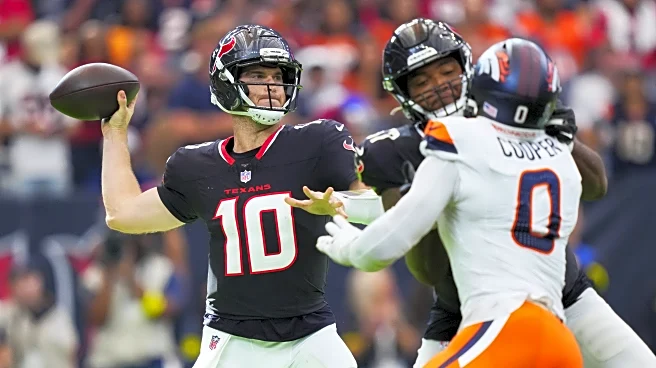What's Happening?
The Pittsburgh Steelers were actively seeking to bolster their wide receiver lineup before the NFL trade deadline on November 4. The team made attempts to acquire Jaylen Waddle from the Miami Dolphins
and Rashid Shaheed from the New Orleans Saints, but negotiations did not lead to successful trades. The Dolphins demanded a first-round pick for Waddle, which the Steelers were unwilling to meet. Additionally, the Steelers pursued Jakobi Meyers from the Las Vegas Raiders, offering fourth- and sixth-round picks, a deal similar to what the Jacksonville Jaguars proposed. Meyers ultimately chose to join the Jaguars, preferring to play with quarterback Trevor Lawrence and head coach Liam Coen over the Steelers' Aaron Rodgers and Mike Tomlin. Rashid Shaheed also declined the Steelers' offer, opting instead to reunite with former Saints and current Seahawks offensive coordinator Klint Kubiak.
Why It's Important?
The Steelers' inability to secure a new wide receiver highlights challenges in their offensive strategy, particularly in the passing game. With limited options beyond DK Metcalf, the team has struggled to find consistent performance from their receivers, impacting their overall offensive effectiveness. This situation underscores the competitive nature of NFL trades, where player preferences and team dynamics play crucial roles. The Steelers' failure to attract top talent may affect their season performance and necessitate a reevaluation of their trade strategies and player development approaches.
What's Next?
The Steelers will need to explore alternative strategies to strengthen their receiving corps, possibly through internal development or future trade opportunities. The team's management may reassess their negotiation tactics and evaluate potential adjustments to their roster to enhance their competitiveness. As the season progresses, the Steelers' performance will be closely monitored, and further moves may be considered to address their offensive challenges.
Beyond the Headlines
The decisions by Meyers and Shaheed to join other teams reflect broader trends in player agency and team culture within the NFL. Players increasingly prioritize team fit and personal preferences over financial incentives, influencing trade outcomes. This shift may lead to changes in how teams approach player negotiations and build their rosters, emphasizing the importance of creating appealing team environments.












